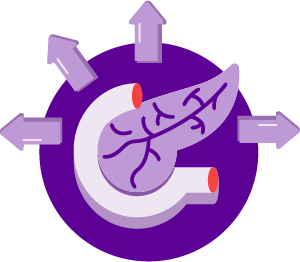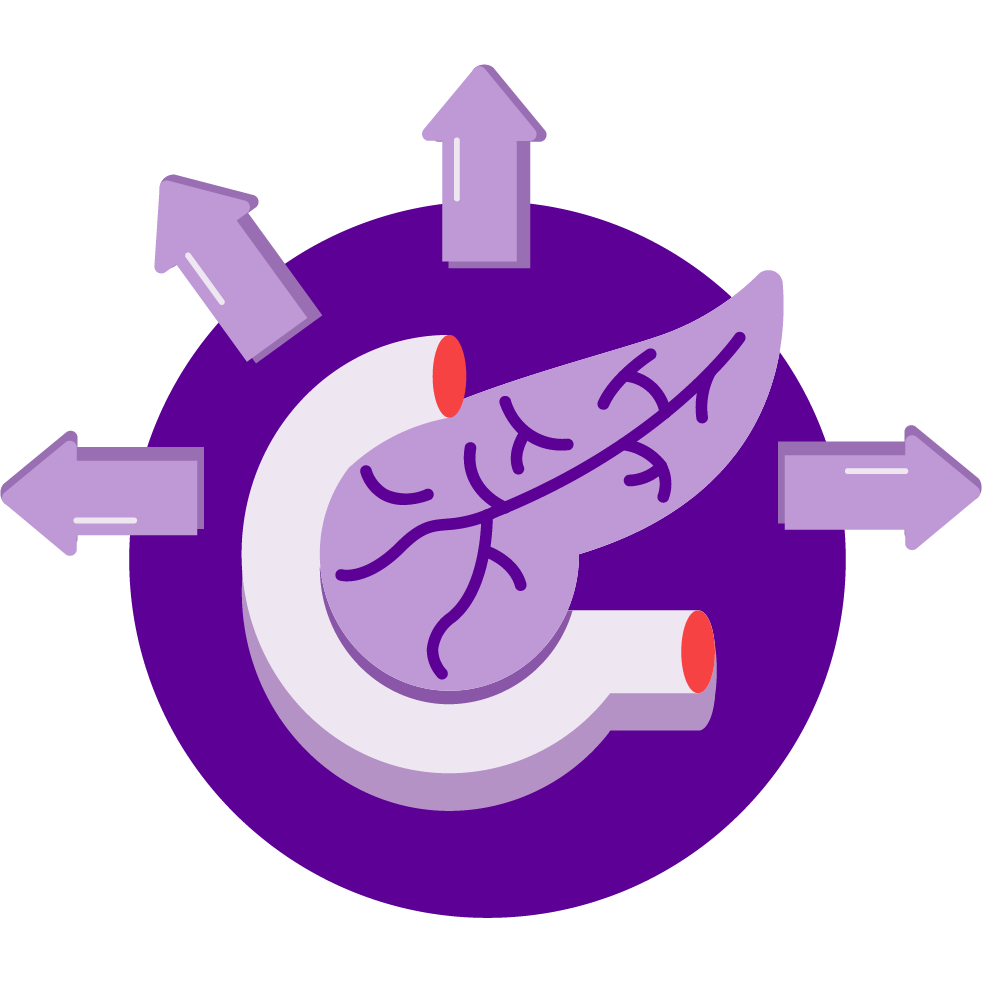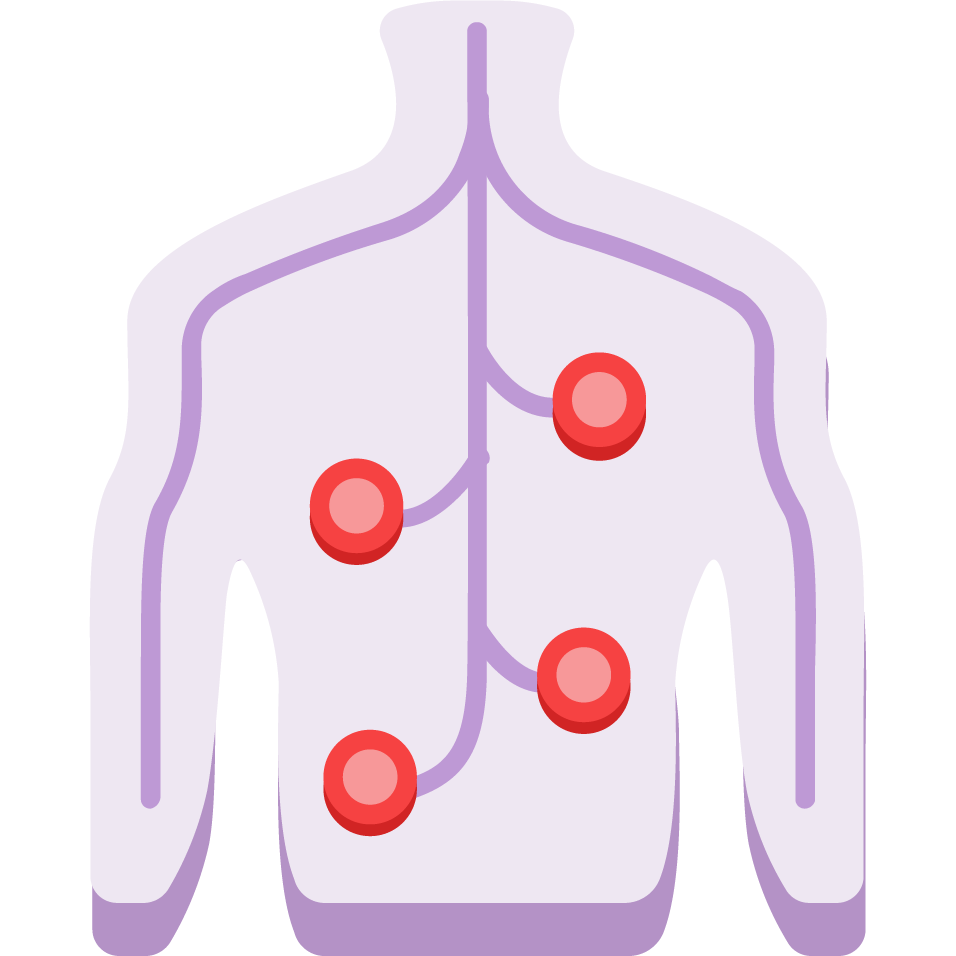
Once-weekly Mounjaro works differently than other type 2 diabetes medications1
Mounjaro is the first and only approved molecule that activates GIP and GLP-1 receptors in the body.1
Mounjaro works in the following ways1

Enhances insulin secretion

Improves insulin sensitivity

Decreases food intake
Additional actions include delayed gastric emptying* and reduced glucagon levels.
Resulting in lower glucose concentration in both fasting and postprandial states.
*This effect diminishes over time.
GIP=glucose-dependent insulinotropic polypeptide; GLP-1=glucagon-like peptide-1.
Mounjaro works in the following ways1:

Enhances insulin secretion

Improves insulin sensitivity

Decreases food intake
Additional MOA actions include delayed gastric emptying* and reduced glucagon levels.
Resulting in lower glucose concentration in both fasting and postprandial states.
*This effect diminishes over time.
Mounjaro MOA video
Mounjaro (tirzepatide) injection: The Mechanism Behind the Peptide.
Indication: Mounjaro is indicated as an adjunct to diet and exercise to improve glycemic control in adults with type 2 diabetes mellitus.
Limitations of Use: Mounjaro has not been studied in patients with a history of pancreatitis. Mounjaro is not indicated for use in patients with type 1 diabetes mellitus. Please see Important Safety Information contained within this video and full Prescribing Information, including Boxed Warning about possible thyroid tumors including thyroid cancer, and Medication Guide at Mounjaro.com/RISK.
The Incretin Effect. Glucose-dependent insulinotropic polypeptide, or GIP, and glucagon-like peptide-1, or GLP-1, are incretins that are released in response to nutrient uptake in the gut. GIP and GLP-1 enhance postprandial insulin release from the pancreas and are responsible for the incretin effect. The incretin effect refers to the phenomenon in which oral glucose elicits a greater stimulation of insulin secretion than infused glucose when the same plasma glucose levels are achieved. In healthy humans, the incretin effect is responsible for up to 70% of postprandial insulin. Both GIP and GLP-1 drive the incretin effect; however, GIP is responsible for approximately two-thirds of the the total effect in healthy humans. In individuals with type 2 diabetes, the incretin effect is impaired, contributing to insufficient control of postprandial glucose levels. Mounjaro: A single peptide that activates GIP and GLP-1 receptors.
Mounjaro is the first in a new class for the treatment of type 2 diabetes. It is a single peptide that activates GIP and GLP-1 receptors in the body. The amino acid sequence of Mounjaro is engineered from native human GIP. The modified structure enables Mounjaro to also bind to the GLP-1 receptor and allows for once-weekly dosing. The activity of Mounjaro on the GLP-1 receptor is lower than the activity of the native GLP-1 hormone, but on the GIP receptor, the activity of Mounjaro is similar to the native GIP hormone. In individuals with type 2 diabetes, Mounjaro improves glycemic control through several mechanisms. Mounjaro enhances both first and second phase insulin secretion as well as reduces glucagon levels. Mounjaro also improves insulin sensitivity. Lastly, Mounjaro decreases food intake and slows gastric emptying; the delay is largest after the first dose and this effect diminishes over time. Ultimately, Mounjaro triggers metabolic actions exerted by two incretin hormones to improve glycemic control in adults with type 2 diabetes mellitus as an adjunct to diet and exercise. Mounjaro is the first in a new class for the treatment of type 2 diabetes. Mounjaro is a single peptide that activates GIP and GLP-1 receptors in the body. Mounjaro enhances both first and second phase insulin secretion, reduces glucagon levels, improves insulin sensitivity, decreases food intake, and slows gastric emptying.
Reference:
- Mounjaro [prescribing information]. Indianapolis, IN: Lilly USA, LLC.